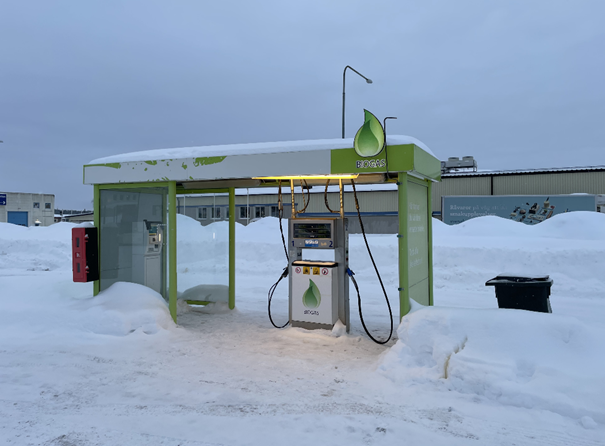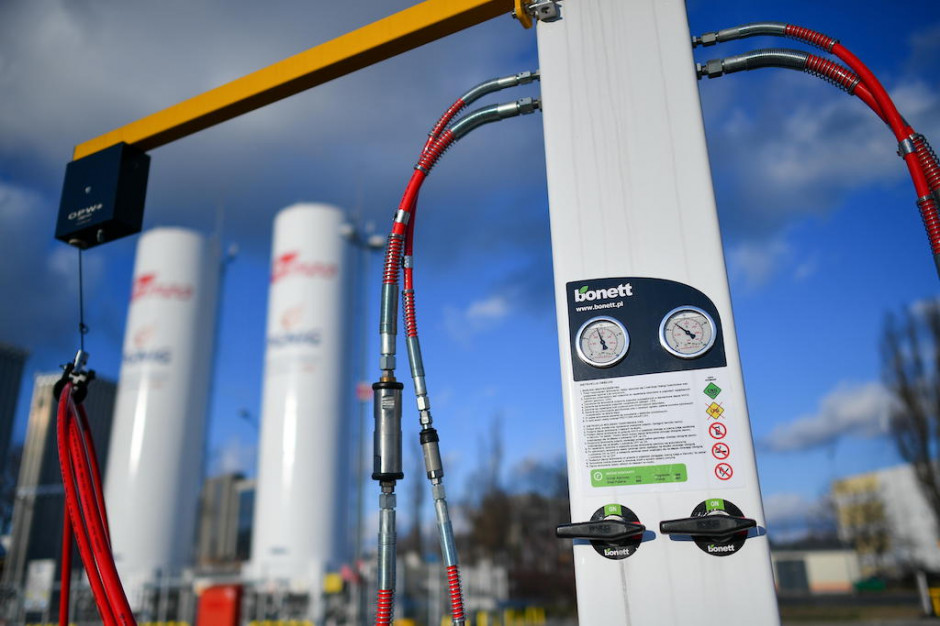Can Poland Utilize Natural Gas in the Automotive Sector?
Let’s start with a brief description of the state of Polish automotive industry: Poland is the most motorized country in Europe. Surprised? Let’s look at the data. By the end of 2022, there were 34.86 million motor vehicles registered in Poland (including passenger cars, trucks, and motorcycles). This ranks our country first in the European Union in terms of motorization rate (number of passenger cars per 1,000 residents) – 687, surpassing even wealthy Germany – 583. However, the average age of cars in Poland is over 14 years, while in Germany it is 10 years. Greeks and Estonians are bigger fans of old cars, with their vehicles averaging 17 years.
In the first part of the article, I described the actions taken by the European Union, along with our country’s government, to reduce the emission of greenhouse gases and toxic chemical compounds into the air. Consequently, the number of cars potentially subject to decommissioning could be enormous. If methane fuel has the potential to help us save nearly a 20-million fleet of old cars from scrapping, let’s take a closer look at it.
Let’s start with the fact that
Methane – a long-known fuel
The use of methane in the form of natural gas in automotive is not new. Already in the 1930s, this type of drive was widely used in England, Russia, and Italy. In Poland, several natural gas refueling stations were built in the 1950s. They were located in Rzeszów, Tarnów, Mysłowice, and Krosno. At that time, about 4,000 so-called technical cars were driven around Poland. The 1960s and 70s saw a complete regression in this field. Again, the first CNG refueling station was opened in 1988 at the Przemyśl-West natural gas mine. Since then, CNG fueling has been used in isolated cases of institutional transport vehicles, such as city bus transport. Currently, there are 56 CNG refueling stations in Poland, with 140 points (data as of January 2024).
For those new to this area, let’s start by explaining the concepts, i.e.,
How do CNG, LNG, and LPG differ?
CNG (Compressed Natural Gas) consists of 97% methane, compressed to a pressure of 20–25 MPa. Its octane number is 110–120. The processing does not require refining, only drying and filtering.
LNG (Liquefied Natural Gas) is natural gas that has been cooled to a temperature below -162°C. By changing to a liquid state, its volume is reduced by 630 times. It is mainly used in long-distance road transport, including for powering buses in urban transport. It is also used as fuel for barges and ships in inland and maritime transport.
LPG (Liquefied Petroleum Gas) is a mixture of propane and butane gases, compressed to 2 MPa. It is obtained as a byproduct during petroleum refining. The octane number of LPG is up to 130. Gasoline is needed to start the engine, and after reaching the proper operating temperature, it switches to gas fuel.
Let’s move on to specifics and look at the benefits of using methane fuel compared to petroleum-based fuels.
|
PROS |
CONS |
|
ECOLOGY
|
|
| Reduced exhaust pollution, 20% less CO2 emissions | |
| Zero emission of complex hydrocarbons (THC) | |
| Reduced CO emissions | |
| 40% NOx emissions for compression ignition engines | |
| Zero emission of particulate matter (PM) | |
| Mitigation of the greenhouse effect | |
| Utilization of methane leaking into the atmosphere (from mines, fermenters) | |
| Bridges to high-pressure technologies – hydrogen | |
| Natural raw material, requires only filtering, no refining needed | |
|
AVAILABILITY OF NATURAL GAS – METHANE
|
|
| Good availability and broad diversification of sources compared to oil. Domestic reserves documented at 145 billion m3 | |
| Baltic Pipe gas pipeline from Norwegian fields through Denmark – with a capacity of 10 billion m3 per year | |
| From coal deposits 1-2 billion m3/year, resources 90 billion m3 | |
| From biomass composting | |
| From the gas terminal – 6.2 billion m3 currently, 7.5 billion m3 after expansion | |
| From the Yamal pipeline – 10 billion m3/year (total capacity 33 billion m3/year), currently suspended due to political reasons | |
|
SAFETY
|
|
| Requires storage under high pressure, 22 MPa | |
| Lighter than air, does not accumulate in depressions | |
| Auto-ignition temperature 595°C (diesel 240°C, gasoline 340°C) | |
|
USAGE
|
|
| Requires additional control of installations | |
| Cylindrical tanks take up additional space | |
| High own weight of steel tanks | |
| Or high price of composite tanks | |
| Longer refueling time, higher storage pressure of 30 MPa | |
| Limited number of CNG fuel stations, 56 stations with 140 points | |
| Vehicle range is 50% less than when fueled by diesel | |
| Does not require transport to fuel station, only connection to pipeline | |
| Possibility of self-refueling from home gas network | |
|
EXPLOITATION
|
|
| Engine operation is about 10 dB quieter | |
| Less knocking combustion, octane number 110-120 | |
| Simpler engine construction | |
| Highest energy value 48 MJ/kg | |
| Suitable for use in spark ignition (SI) gasoline and compression ignition (CI) diesel engines with no significant modifications |
|
The above summary of the benefits of using CNG is undeniable. If it is so good, then why do so few of us drive on CNG? Research by the author shows that the factor discouraging potential Polish customers from using this fuel is primarily the limited availability of refueling stations. However, let us recall the experiences associated with the introduction of LPG to the market. Initially, in the 1990s, there were only a few dozen stations across Poland, but today LPG is available at most gas stations.”
This translation presents the situation and potential obstacles for adopting CNG in Poland, drawing parallels with the historical context of LPG adoption.

CNG self-refueling station in northern Sweden (photo: A. Górniak)
Author: Dr. Adam Górniak – long-time manager in the automotive industry, trainer, and consultant
List of sources:
- Z. Stelmasiak: Selected problems of using natural gas for powering compression ignition engines. In: Automotive Archive 1 (2006)
- A. Górniak: The use of selected means and methods of obtaining and processing data for the needs of anticipatory quality planning, considering customer needs, as an element of production preparation on the example of a selected industry. Doctoral thesis. Zabrze 2019
- Materials from Dual Fuel Systems LTD. – Fuel Fusion 2013
- Gas Review June 2017 No. 2 (54)
- https://www.cng.auto.pl
- https://www.kobize.pl/
- https://www.pzpm.org.pl/en/Automotive-market/Vehicle-park-registered/Vehicle-park-registered-in-Poland-1990-2022-xlsx
- https://www.teraz-srodowisko.pl/publications/biogas-in-poland-2023
- https://fleet.com.pl/news/poland-in-first-place-in-europe


